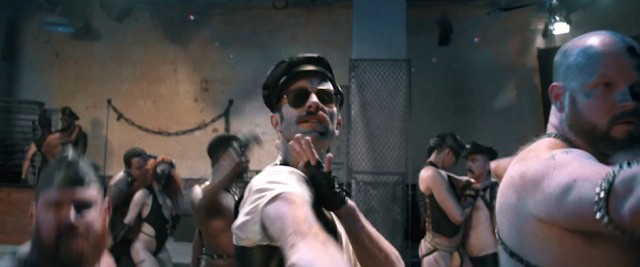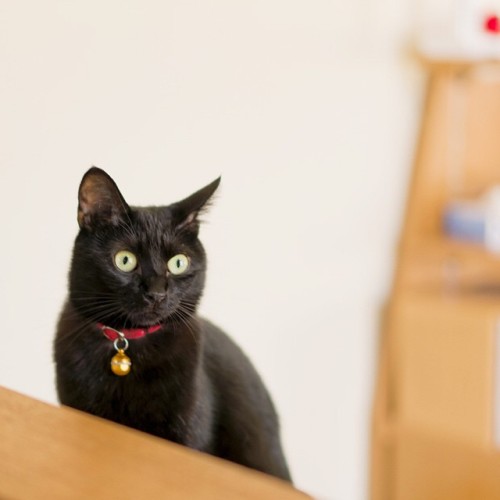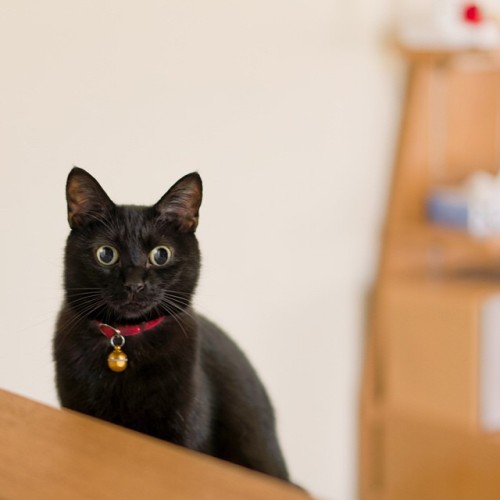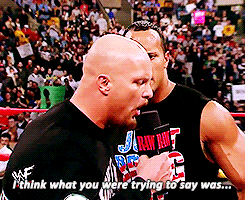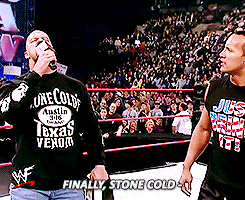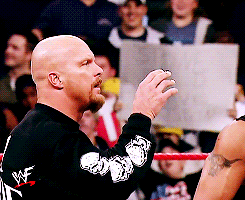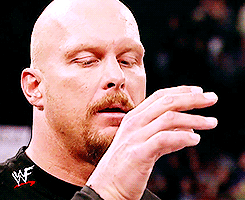
Sophianotloren
Shared posts
Eve Of DestructionSynthpop music cover by The Great Void employs...



Eve Of Destruction
Synthpop music cover by The Great Void employs ‘reverse lip-sync’ to original performace footage:
It’s a cover of the classic protest song “eve of destruction”, made famous by Barry McGuire’s performance of it on the Hullabaloo show in 1965. With the help of Johnny Woods, we manipulated the video of his performance to act as a “reverse lip sync” to my rendition of the song.
WOVEMaybe something to keep an eye on: wearable tech is long...


WOVE
Maybe something to keep an eye on: wearable tech is long display that can wrap around the entire wrist like a watch.
Announced today, there is little official information released other than more information will be revealed in the end of September.
You can find out more here, or check out the Wove Tumblr here
Cat Running for Canadian Parliament on Anti-Graffiti Platform

Humbert in Alley Cat Gallery (all images courtesy John Jordan)
Yesterday, the CBC reported that a new candidate with a reputation for fighting illegal graffiti has joined the running in a local Montreal riding that will determine the region’s representative in Canadian parliament. The new independent candidate for the tony, predominantly anglophone NDG–Westmount district is a four-year-old cat named Humbert. He is also the official muse for a local art gallery that opened last year as a way to discourage unwanted graffiti.
Alley Cat Gallery, located in a small alley off busy Sherbrooke Street, was born when Humbert’s owner John Jordan decided to cover the many tags on the alley’s brick walls with works of art so that his aspiring feline politician could hang out in a clean courtyard. The idea evolved into a full-fledged gallery exhibiting cat-related artworks exclusively, including original pieces by local artists. Ever since, the space has remained clean.
As of press time no official poll has been conducted to gauge public support for Humbert. However, as a tiger tabby with a hint of Maine Coon, he may at least appeal to voters seeking a candidate with a more diverse background than the feline’s all-white, male, human competitors.
Always interested in paw-litical candidates with a stake in the arts, Hyperallergic reached out to Humbert’s spokesperson, campaign manager, and owner to learn more about the cat’s campaign platform.
* * *
Claire Voon: Does Humbert align himself with any political party?
John Jordan: Humbert is fiercely independent and highly suspicious of things on two legs regardless of party affiliation.
CV: What plans does Humbert have to support and promote the local arts? Where does he stand on government-subsidized art? Would he try to devote a portion of his budget to public art?
JJ: We hope Humbert’s story will inspire people to invest more in public art, to take it upon themselves to beautify and inspire with art in their neighborhoods, and not just rely on corporate and public funds to do it. We must become the change we wish to see in the world.
CV: Is Humbert running for office on an anti-graffiti platform? What policies will he hope to implement to combat illegal street art?
JJ: Humbert’s motto is “Let’s Keep The Box Clean.” He is a serious groomer and feels strongly about keeping up a good appearance.
CV: What are Humbert’s thoughts on the national minimum wage? LGBT-related issues? Taxes? How will he improve public transit?
JJ: Treats must be equally distributed; spay or neuter your pets regardless of proclivity; tax less/spend less; and everyone should have a job they can walk to.
CV: Incumbent Liberal MP (and former astronaut) Marc Garneau challenged Humbert to a radio debate. How will Humbert respond?
JJ: Humbert will step up to Mr. Garneau if there’s a chance he can put a cat on the moon.
CV: Does Humbert identify as an anglophone or a francophone?
JJ: Humbert has no trouble understanding anyone.

Alley Cat Gallery

Rupert Bottenberg, “Black Cat”
A Book for Drinking
Theresa Dankovich’s “The Drinkable Book,” can purify water for drinking—enough for one person for more than four years. Gizmodo reports that the book’s pages are coated with nanoparticles that purifies the water while the pages are printed with important water safety instructions in multiple languages.
Related Posts:
When Postinternet Art Starts to All Look the Same

Sarah Cohen, still from “Teenage girl dances in room alone” (all images courtesy Stream Gallery)
Molly Soda is an art darling of a generation that grew up with the internet as a constant companion. Stream Gallery’s current show, SAME, was curated by Soda and features work by her and four other artists exploring the phenomenon of identifying with others’ posts and images on social media sites like Instagram and Tumblr. Whether they be expressive memes, reality TV clips, or selfies, these posts are often reblogged, retweeted, and reposted with captions like “me as hell,” “selfie,” “it me,” and of course, “same.”
The gallery’s entryway is dominated by a large TV screen showing Sarah Cohen’s work “Teenage girl dances in room alone.” This collection of fuzzy webcam videos of the artist dancing in a room alone is neither particularly well-made nor interesting; the contents are indiscernible from what comes up in the search results for “me dancing” on YouTube. Soda has actually uploaded a large collection of videos of herself on YouTube over the past five or so years, dancing to everything from pop punk to Taylor Swift. Talking about Cohen’s piece with Bedford + Bowery, she beamed, “If you’ve looked at my YouTube channel, there are over 300 [videos] of me doing that exact thing.” The played-out adage regarding art, ‘My kid could do that,’ feels uncomfortably appropriate here, because the fact of the matter is, most adolescents with a MacBook actually have. Cohen’s piece doesn’t fall flat simply because it uses a ubiquitous 21st-century method of production, but because it doesn’t have enough of a voice or a distinct style to distinguish itself from the sea in which it wades.

Molly Soda, “Caught” (2015)
Soda’s own contributions to the exhibition pleasantly show an evolution in her practice. As she has come to be recognized for her digital work like zines, GIFs, videos, and other forms of new media, it’s interesting to see her return to her photography roots (she has a BFA in the medium). Two dark, grainy photographs are printed on pieces of fabric hung up by binder clips. One of these is a paparazzi-style close-up of the artist behind the wheel of a car, unabashedly biting into a sandwich. The work is both moody and playful, catching Soda in the act of something as intimate and everyday as having a meal. One of the reasons for Soda’s success as an artist is her ability to take these quotidian facts of life and spin them into something that’s simultaneously familiar and takes on a life of its own.
Noorann Matties’s photographs feel amateur and self-indulgent in a way similar to Cohen’s work. Showing various dimly-lit domestic settings littered with empty bottles and food containers, they are meant to “explore mental illness.” Yet the series reads more like snapshots of a messy roommate — which, admittedly, feeds well into the show’s theme, but feels mundane. The hazy photos fall somewhere between candid and posed, and their generic composition feels nonproprietary. The most obvious work is a self-portrait of Matties holding her camera and openly sobbing in front of a mirror. In a different curatorial context, among some of Matties’s other, stronger pieces, this photo could have opened up a larger dialogue about vulnerability on the internet; here, lost within the rest of the series, it gripes to the viewer, ‘I’m sad!’
The only non-photographic contribution comes from Brie Moreno, whose series My Morning Routine features awkwardly drawn square panels of caricatures doing their hair and makeup. Moreno’s work feels relatable in its domesticity, while still contributing its own style and intricacies, such as the abstracted hair shape that awkwardly changes in each frame, like an impotent Medusa. Laurence Philomène’s series of photographs featuring models in an orange wig exhibits the most technical finesse of the show. Working with a sugary color palette and choosing to mostly obscure the faces of the models wearing the wig, Philomene composes her pictures so elegantly, it would feel silly to spend time gendering their subjects. She instead offers up ambiguous bodies onto which viewers can transpose themselves.
While SAME does delve into the experience of relating to virtual manifestations of strangers on the internet, it also reads as complacent and underdeveloped in the way it goes about evoking sameness. At what point does postinternet work just become a reproduction of the web IRL? SAME exhibits work the vast majority of the Western millennial generation is used to seeing on a daily basis on Tumblr, Snapchat, and other digital communities. Without an evolutionary push forward, perhaps by including other methods of production or reproduction more evocative of life online, the show feels a couple years too late.

Laurence Philomène, “Me Vs. Others” (2015)
SAME continues at Stream Gallery (1196 Myrtle Avenue, Bushwick, Brooklyn) through August 23.
Correction: This article originally misstated the gender of Laurence Philomène. It has been fixed.
Fosse does Folsom in event’s new trailer, Folsom Street
Okay, no one was as great as Bob Fosse. But the new trailer video for San Francisco’s Folsom Street Fair makes me so proud of my hometown right now! FOLSOM STREET was directed and produced by Aron Kantor, choreographed by Danny Dolan, and features Broadway performer Colin Cunliffe, nightlife promoter Mario Diaz, gender-queer drag queen Grace Towers, local treasure Fauxnique, and a variety of San Francisco dancers and performers. The short film’s creators explain,
San Francisco has long pushed culture boundaries, radical self-expression and sexual freedom. Today awash in stories of the changing face of the city and its quickly eroding creative communities, “Folsom Street” joyously celebrates the rich history of diversity that pushes the limits of raw sexuality that make this city the exciting cultural haven that it has always been.
… The film serves as both a metaphor for the Folsom Street Fair and an example of the possibilities of queer community effort and activism.
Folsom Street Fair 2015 is Sunday, September 27, 11am – 6pm on Folsom Street between 8th and 13th streets in San Francisco, CA.
The post Fosse does Folsom in event’s new trailer, Folsom Street appeared first on Violet Blue ® | Open Source Sex.
A Masterpiece by Which to Remember Type Designer Hermann Zapf

Hermann Zapf, calligraphic manuscript of the Preamble of the Charter of the United Nations in French, English, Spanish, and Russian, signed and dated Frankfurt am Main, 1960 (courtesy the Morgan Library & Museum) (click to enlarge)
In his lifetime, German type designer Hermann Zapf created around 200 typefaces across the world’s languages, from Arabic to Cherokee. His sans-serif 1952 Optima was used to record the names on both the Vietnam Veterans Memorial in Washington, DC and the National September 11 Memorial in New York, while his playful pictorial Dingbats paved the way for our digital emoji. Throughout his career he adapted to changing technology, with hot metal type all the way to desktop computing. For example, the calligraphic Zapfino typeface in Mac OS X that automatically adjusts as you type. Zapf died at the age of 96 on June 4, and as a small tribute, Manhattan’s Morgan Library & Museum is exhibiting one of his biggest calligraphic works: the UN Charter Preamble, written in French, English, Spanish, and Russian.
Christine Nelson, Drue Heinz curator of literary and historical manuscripts at the Morgan, explained to Hyperallergic that in addition to memorializing Zapf, the display of the preamble marks the 70th anniversary of the signing of the UN Charter itself. “So the Morgan is also showing the manuscript in honor of the anniversary of the UN Charter, which Secretary Ban Ki-moon said ‘symbolizes the hope and aspirations that we can bring the world as it is a little closer to the world as it should be,'” Nelson added. The manuscript went on view June 26, the anniversary of the signing, and will stay up until October 25, which is the weekend coinciding with UN Day, commemorating the treaty going into effect.

The Hermann Zapf UN Charter Preamble installed at the Morgan Library (photo by the author for Hyperallergic) (click to enlarge)
The UN Charter Preamble is tucked into an alcove on the staircase between the special exhibition galleries at the Morgan. You can zoom in closer on a digital version of Zapf’s calligraphic preamble online at the Morgan Library, with its precisely sketched commas and letters in elegant sans-serif. The words “We the peoples of the United Nations, to save succeeding generations from the scourge of war, which twice in our lifetime has brought untold sorrow to mankind” are exactly written with the rest of the preamble text that established the United Nations. Steven Heller wrote at the Atlantic that Zapf considered the work so important “that he always kept a full-scale imitation of it in his studio.”
The Morgan, under Director Fred Adams, was interested in acquiring contemporary calligraphy, and commissioned the piece from Zapf in 1960. Adams, according to Nelson, described Zapf’s work with these words: “If typography is basically two-dimensional architecture, and calligraphy contains elements of both music and poetry, it might be said that none of the arts is alien to Mr. Zapf, though he would never say so himself.”
“The Morgan’s collection is full of extraordinary examples of the printed and handwritten word, and Adams was right to want to ensure that Zapf’s work joined that company,” Nelson stated. “Not only was Zapf a master of graceful hand-lettering; he also embraced the technological changes that emerged during his lifetime as a designer. Zapf’s letterforms are all around us — at such resonant spots as the Vietnam Memorial in Washington — and yet we rarely focus on those shapes and their makers.”

Hermann Zapf, detail of the calligraphic manuscript of the Preamble of the Charter of the United Nations in French, English, Spanish, and Russian, signed and dated Frankfurt am Main, 1960 (courtesy the Morgan Library & Museum)
Hermann Zapf’s UN Charter Preamble is on view at the Morgan Library & Museum through October 25.
An Integrated System of Abuse
Great post from Jill Filipovic on Twitchy:
Twitchy may be one of the most powerful political platforms online, but its role as an organized harassment tool is almost never discussed. Founded in 2012 by conservative blogger Michelle Malkin, the site has half a dozen editors who troll Twitter for content to post; each post consists of a tweet or series of tweets along with some brief and often outraged commentary. Malkin sold Twitchy to Salem Media, a for-profit Christian company in 2013, but the religiosity of its new owners has not shifted its acidic content. (Malkin and several current Twitchy editors did not respond to multiple emails requesting comment, and Salem Media did not return emails and phone calls requesting comment)…
While Twitchy’s content is tweet aggregation, its purpose seems to be filling insatiable reader rage. Many of the tweets posted to Twitchy are put on there seemingly for the express purpose of demonstrating how stupid or evil Twitchy believes the tweeter to be (although the site occasionally posts tweets from allies, cheering them on for shutting down enemies). The Twitchy team embeds the tweets into the posts, making it easy for their users to click through and engage with the tweeter directly.
And “engage” they do.
Erik, of course, felt the brunt of Twitchy harassment back in the day. The existence, and clear purpose, of Twitchy is one of the reasons why I struggle to take seriously the hand-wringing of Decent Liberals about how the PC folks with the Black Lives Matter and the Humorless Feminism are going to ruin everything by creating a Backlash. Twitter has already been weaponized; while self-restraint is often a virtue, there’s nothing that liberals and leftists can do to un-weaponize it. There is no pending backlash that could be avoided by telling the feminists and minorities to be quiet, because the “backlash” isn’t a counter-attack; it’s a pre-emptive strike.
doodleforfood: Guest comic by John Sutton of The Petri Dish...
Uber's background checks reportedly missed criminal records
 Los Angeles and San Francisco are convinced that Uber's background checks aren't as good as the company claims they are, and it looks the two cities might have ample proof that this is a real, consistent problem. Their district attorneys have amen...
Los Angeles and San Francisco are convinced that Uber's background checks aren't as good as the company claims they are, and it looks the two cities might have ample proof that this is a real, consistent problem. Their district attorneys have amen...
Kracken 20-Sided Die
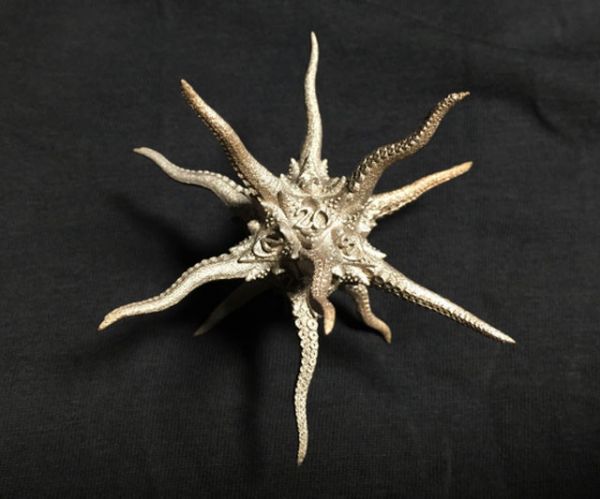
Release the kraken and roll for a sanity check! Nvenom8 Designs made this 20-sided die that screams out from the abyss should you botch your roll. It lacks the flat sides of a traditional die, but it lands clearly enough on its many tentacles. It's about 3 inches across and can be manufactured in steel which is presumably cursed.
-via Dude I Want That
1-2-3, Anyone But Lee
The last time we checked in on San Francisco, Mayor Ed Lee (appointed to fill Gavin Newsom's vacated seat and elected for a full term in 2011) was set to run unopposed in the November election. But as candidate, community organizer, and singer Amy Farah Weiss (also known as "YIMBY" for Yes In My Backyard) has been quick to point out, there are in fact now five official alternatives to Lee on the ballot, though local media refuses to acknowledge their respective campaigns. In response to the black-out, Weiss and her fellow candidates, educator and organizer Francisco Herrera and columnist and comedian Broke-Ass Stuart Schuffman have come together as a coalition. The trio could conceivably pose a triple threat if voters take seriously their directive to rank them 1-2-3 in a bid to oust Lee. Weiss has even adapted the old Bobbettes number, "Mr Lee" as a campaign song, a clever attempt to give voters a catchy way to remember the strategy (candidates four and five are Reed Martin and Kent Graham of whom I could find out little).
Though all new to potential public office, Weiss and Herrera have community organizing experience in their respective neighborhoods, the Western Addition and Mission, while Shuffman, an Examiner columnist, has humor and a sharp tongue on his side. Referring to his yet-to-be-revealed platform on his website he writes, "The thing that most people don’t get though is that platforms are rolled out throughout a campaign. Like, what’s Hillary Clinton’s platform? You have no idea, right? Hillary has been running for President for like eight years and she hasn’t even announced her platform yet…"
On Monday, the three candidates came together for a "cakewalk," organized by Weiss as a response to wags calling Lee's run a shoe-in and to call for Lee to agree to publicly debate his opposition which he has so far refused. Turn-out was small, but awareness of the candidates and their respective campaigns is growing. I asked Dale Duncan, a friend and longtime Mission District resident why he chose to support Shuffman: "He seems earnest and I didn't know of anyone else bothering to run against Ed Lee, the worst mayor in my 35 years here. If it had only been Matt Gonzalez instead of Gavin back when."
In 2005, Gonzalez (who went on to run with Ralph Nader in the 2008 Presidential election as the Green Party candidate) lost to Newsom in a run-off by a very slight margin. But what he achieved by mobilizing young and disenfranchised voters was monumental (he is presently the chief attorney at the San Francisco Public Defender's Office). And while it might seem the population who cast their votes for Gonzalez has since been squeezed out of town, it's possible they've simply lost their advocacy and the work of mobilizing the working, immigrant and artist populations here has fallen to Herrera, Shuffman and Weiss. I'm acquainted with both Weiss and Herrera who've made themselves known to the communities for cultural preservation as advocates of arts, literacy, and education. As performing musicians, they join in a great San Francisco tradition of politically engaged artists who begin by voicing their dissent, using their stage as a platform, and reminding us all that democracy is a participatory practice, if not a theatrical one.
Readers may remember San Francisco circa 1979, when Dead Kennedys singer Jello Biafra emerged as the people's candidate in a race against Dianne Feinstein: Among his most practical ideas, Biafra proposed the police department be elected, that cars be banned from the city limits and squatting in vacant buildings be legalized. He also suggested businessmen wear clown suits and that statues of Dan White (killer of Mayor George Moscone and Supervisor Harvey Milk) be erected and the Park department earn revenue by selling eggs for throwing.
"One thing I will attempt to do is bring government out from behind closed doors," he said in a televised interview at the time. To naysayers who declared his candidacy a publicity stunt or a joke, Biafra replied, "They should keep in mind it's no more and no less of of a joke than anyone else they care to name." A couple of decades later in 2007, punk rock bassist and cultural agitator "Chicken" John Rinaldi tested the city's then-new ranked choice voting system and grabbed 11 percent of the vote from Newsom. Not long after, he lead an inspired campaign to rename the local sewage treatment plant after George W. Bush. There were likely others, now forgotten, though it must be said, the City's troubles began long before Lee, Newsom, or even Feinstein. The value of campaigns like Jello's, Chicken John's and the 1-2-3 efforts by Herrera, Shuffman and Weiss-- which admittedly appeal to counterculture, revolutionary and disaffected voter sensibilities-- is to tear away the curtain of conformity and corruption that has long shrouded our local government.
In light of the recent news of the FBI probe implicating Lee, alleging he took "substantial bribes in exchange for favors" and with the substantial base of labor, neighborhood, and activist organizations working to effect necessary policy, far from a done deal, change-seeking San Franciscans have every reason to remain hopeful. Two ballot initiatives concerning limit short term rentals (Airbnb) and housing in the Mission, and a supervisor's race that could replace Lee appointee Julie Christensen with progressive Aaron Peskin in District 3 could be the things that begin to set things back on course here. And while for decades we've been hampered by a largely irresponsible and inert daily paper, uncommitted to investigative reporting or to taking a stand, our best hope has always been our citizenry, especially those willing to take on public service and a radical stand. Though they may frame matters goofily, in a confrontational way, or inelegantly, the candidates bring to the discussion issues from housing and human rights to jobs and open space that are of concern to everyday San Franciscans. I'm going to assert there's still time for three dark horses who share one vision for a more equitable, livable, and affordable San Francisco, to pick up more supporters and some steam. A vote for 1-2-3-- anyone but Lee-- could serve as an important step on the way toward reclaiming San Francisco.
Francisco Herrera, Stuart Shuffman & Amy Farah Weiss are mayoral candidates on the Nov. ballot in San Francisco |
killerville: dracofidus: I JUST WANTED TO PLAY MONOPOLY LOCAL...
Chastity belts were a joke, then a metaphor, then a hoax

 Historian Albrecht Classen got so tired of hearing people blithlely assert that chastity belts were ever a thing that he wrote The Medieval Chastity Belt: A Myth-Making Process, explaining how a 15th century hoax that appeared in a manuscript that also feature fart jokes and devices for making people invisible became canon.
Historian Albrecht Classen got so tired of hearing people blithlely assert that chastity belts were ever a thing that he wrote The Medieval Chastity Belt: A Myth-Making Process, explaining how a 15th century hoax that appeared in a manuscript that also feature fart jokes and devices for making people invisible became canon.
From Sarah Laskow: Read the rest
Urban Dictionary | 624.png

A Bad Lip Reading of the First 2015 Republican Debate
I'm Going To Build My Own Theme Park With Blackjack and Hookers | c7a.jpg

Ayn Rand’s The Lion, The Witch, And The Wardrobe
"If the witch understood the true meaning of sacrifice, she might have interpreted the Deep Magic differently, for when a willing victim who has committed no treachery, dies in a traitor’s stead, the stone table will crack and even death itself will turn backwards."
"Oh, how interesting," Lucy said. "What is the true meaning of sacrifice, Aslan?"
"It is an artificial anti-concept," Aslan said in his low, golden voice. "It is the ultimate force of destruction. The very word self less suggests self-immolation, a complete annihilation of one's own self for the sake of others. Sacrifice destroys knowledge, skill, talent, usefulness, all in the name of duty. It destroys love and self-esteem, which are the same thing. Self-sacrifice is an immoral nightmare."
"I don't quite understand," Lucy said. "Does this mean Edmund is going to die instead of you?"
"Let us put it this way," Aslan said. "If I exchange a penny for a dollar, have I made a sacrifice?"
Read more Ayn Rand’s The Lion, The Witch, And The Wardrobe at The Toast.
Breaking: Deez Nuts Polling at 8 Percent in North Carolina

Registered presidential candidate Deez Nuts is polling at nine percent in North Carolina, according to Public Policy Polling — only 13 points away from current leader in the Republican field, Donald Trump.
EigenstyleProject by Hackerati employs computational analysis to...







Eigenstyle
Project by Hackerati employs computational analysis to fashion, analysing a dataset of clothing to discover patterns in style:
Any set of images can be broken down with Principal Component Analysis. This has been done pretty successfully with faces. Here we’ll take a look at style.
Our dataset is 807 pictures of dresses from Amazon. They have a standard image size, but unfortunately do not have a standard model pose (though they tend to be centered in the image similarly). Ideally, our principal components would only be about actual dress style, but here many of them will be concerned with model pose. Despite this, we can still do a lot with this data set.
thehackerati also has a Tumblr blog here
vertigoheadspace: Neil DeGrasse Tyson
SophianotlorenWoah! Really?! That sounds... reasonable! Okay, I think you've convinced me.
via Tadeu





